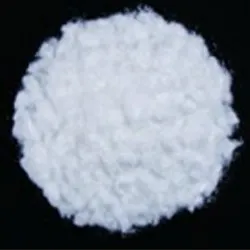
emulsifier for mayonnaise
The Role of Emulsifiers in Mayonnaise Production
Mayonnaise is a staple condiment around the world, cherished for its creamy texture and rich flavor. The secret behind this beloved sauce lies in its unique ability to combine oil and water, a feat enabled by emulsifiers. Understanding the role of emulsifiers in mayonnaise production not only illuminates the science behind this condiment but also enhances our appreciation for its culinary versatility.
At its core, mayonnaise is an emulsion—a mixture of two immiscible liquids, in this case, oil and vinegar or lemon juice. When these two liquids are whisked together, they tend to separate, leading to a broken emulsion. However, the addition of an emulsifier stabilizes the mixture, allowing the oil droplets to remain suspended in the water phase. This is essential for creating the smooth and thick texture that mayonnaise is known for.
Common Emulsifiers Used in Mayonnaise
The most commonly used emulsifier in mayonnaise is egg yolk, which contains lecithin, a natural phospholipid. Lecithin has both hydrophilic (water-attracting) and hydrophobic (water-repelling) properties, making it an effective stabilizer. When egg yolk is added to the blend of oil and vinegar, the lecithin molecules surround the oil droplets, preventing them from coalescing and resulting in a stable emulsion.
In commercial mayonnaise production, manufacturers often incorporate additional emulsifiers to enhance texture, stability, and shelf life. Common additives include mustard, which also provides flavor, and synthetic emulsifiers like mono- and diglycerides. These emulsifiers improve the consistency of the mayonnaise and can help maintain its quality during storage, sealing in freshness and preventing separation.
emulsifier for mayonnaise

Emulsifier Percentage Finding the Right Balance
When formulating mayonnaise, the percentage of emulsifier is critical. Too little emulsifier can lead to an unstable product, resulting in a separation of oil and water, while too much can create a thick, undesirable texture. Typically, the emulsifier content ranges from 1% to 3% of the total mayonnaise formulation, depending on the desired consistency and the specific ingredients used.
The ideal texture of mayonnaise is creamy yet spreadable, with a balanced mouthfeel. Achieving this balance requires careful consideration of the emulsifier type and quantity. Additionally, factors such as mixing techniques—whether by hand or machine—can further influence the stability of the emulsification process.
Conclusion
In summary, emulsifiers play a vital role in the creation and stability of mayonnaise. Through the use of natural and synthetic emulsifiers, manufacturers and home cooks alike can achieve the perfect emulsion that results in the creamy texture and rich flavor that mayonnaise is celebrated for. As culinary innovations continue to evolve, the exploration of new emulsifiers may further enhance this classic condiment, allowing for even more creativity in cooking and food preparation. Whether used in sandwiches, salads, or dressings, mayonnaise remains a versatile and cherished addition to our culinary repertoire, all thanks to the unassuming emulsifier.
-
Understanding Synthetic Rubber OptionsNewsApr.27,2025
-
Trichloroisocyanuric Acid: Essential for Clean and Safe WaterNewsApr.27,2025
-
Sodium Dichloroisocyanurate: Key to Safe Water TreatmentNewsApr.27,2025
-
Sodium Acid Pyrophosphate: Essential in Modern Food ProcessingNewsApr.27,2025
-
Essential Water Treatment ChemicalsNewsApr.27,2025
-
Denatured Alcohol and Its Industrial UsesNewsApr.27,2025
-
The Versatile Uses of Sodium BicarbonateNewsApr.24,2025
Hebei Tenger Chemical Technology Co., Ltd. focuses on the chemical industry and is committed to the export service of chemical raw materials.
-

view more DiethanolisopropanolamineIn the ever-growing field of chemical solutions, diethanolisopropanolamine (DEIPA) stands out as a versatile and important compound. Due to its unique chemical structure and properties, DEIPA is of interest to various industries including construction, personal care, and agriculture. -

view more TriisopropanolamineTriisopropanolamine (TIPA) alkanol amine substance, is a kind of alcohol amine compound with amino and alcohol hydroxyl, and because of its molecules contains both amino and hydroxyl. -

view more Tetramethyl Thiuram DisulfideTetramethyl thiuram disulfide, also known as TMTD, is a white to light-yellow powder with a distinct sulfur-like odor. It is soluble in organic solvents such as benzene, acetone, and ethyl acetate, making it highly versatile for use in different formulations. TMTD is known for its excellent vulcanization acceleration properties, which makes it a key ingredient in the production of rubber products. Additionally, it acts as an effective fungicide and bactericide, making it valuable in agricultural applications. Its high purity and stability ensure consistent performance, making it a preferred choice for manufacturers across various industries.











